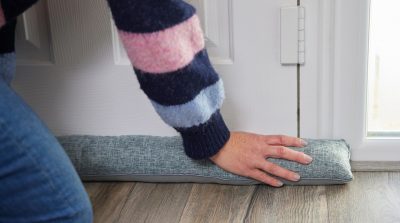Being self-employed can sometimes mean that getting loans and other financial products is more difficult than if you were employed by another business. However, all is not entirely lost, and there are options available to you.
You just need to be aware of some of the extra information you may be required to provide, as well as the types of mortgages most suited to self-employed applicants.
Obviously, each case is different, and acceptance decisions are based on your own personal circumstances, including your work and financial history. This guide aims to help you through the mortgage minefield and prepare you for every situation.
Proving your income
The most important aspect for any lender is proof of income. As self-employed you don’t have regular payslips to make this an easy process, you need to ensure you have at least six months’ worth of invoices and bank statements (often 12 months) to give a full picture of what you have earned.
“If you’re self-employed, finding a specialist lender who will offer you a contractor mortgage based on your daily rate could be the most viable option,” says Pete Mugleston, Mortgage Broker and MD at Online Mortgage Advisor. “They will calculate your income by taking your day rate and multiplying it by the amount of days you work each week x48. If you multiply this figure by four (a typical lending multiple), you will get a rough idea of how much you could borrow.”
If you are contracted, then a copy of your current contract will also add weight to your application, especially if you have been working under that contract for more than six months, or it shows that it still has a long time to run. This will make you a more viable candidate for any lender to look at you favourably.
Alternatively, professional contractors and self-employed people who charge a day rate and have an up-to-date work history may find that lenders are willing to make an offer based on that.
Your personal tax returns, up to four years of business accounts and previous 12 months’ contracts will all be taken into account, so make sure you have all this to hand when applying for a mortgage.
Net profit and day rates – affordability checker
Once you have managed to prove your income, mortgage lenders will run an affordability checker. Again, because your income is more likely to fluctuate than that of employed workers, this can be a tricky calculation.
Where appropriate, most self-employed people will have their day rate taken and multiplied by how many days they work in a week, then multiplied again by 48 (the approximate number of weeks worked in a full year, taking into account 4 weeks of unpaid holiday allowance). Typically, a lender will then offer four times this amount as a mortgage figure. However, this can sometimes be increased to 5 or even 6 times, depending on the lender.
In other cases, your net profit may be taken into account instead of your day rate, if this is more appropriate. It is important to bear this in mind well in advance when doing your tax returns if you feel you may want to apply for a mortgage within the following three years, as showing a low net profit will adversely affect the amount you will be able to borrow.
Age limits
For contractors and the self-employed, lenders will often set a lower age limit that they are prepared to lend to – around 25 years old – in order that there is enough back history. Many will also set an upper age limit – around 75 years old – which allows them to be sure that the mortgage is still able to be paid when they enter into retirement.
Deposit amount
It may be that you have built up a good amount of savings over your period of self-employment, or from when you were employed, or even from an inheritance. If you can use this to put towards your deposit, this will also alter the amount you can borrow and the rates available to you.
A larger deposit means you may need to borrow less as a percentage of the purchase price of the property you want to buy, which may mean you qualify for better interest rates.
Government schemes
Conversely, if you feel you need further financial support, there are Scottish Government schemes available – particularly for first-time buyers and other priority groups – to help you get on the property ladder.
A New Supply Shared Equity scheme (for new build properties only) or Open Market Shared Equity Scheme sees you share the financial burden with the Government, while you owe a percentage – typically anywhere between 60% and 90% and they are responsible for the rest. You will still need to pay a deposit, but it is only calculated as a percentage of the part of the property you own, making it an affordable option for those who don’t have much savings to allocate.
You own the property outright and your name is on the deeds, but when you come to sell it you are only entitled to the percentage of sale price that you own, with the Scottish Government recouping their own percentage. You can increase your share by at least 5% in a year, should you wish to do so, meaning that by the time you come to sell, you will have a larger percentage share of the property and the Government will only be entitled to the percentage that they own at that point.
What type of self-employed are you?
The type of mortgage you can get and the paperwork you will require, is dependent on what classification of self-employment you fall under. For example, zero-hour contract workers need to have at least six months’ work history, while agency workers may need 12 months’ worth. In contrast, limited company directors take into account your allocated salary plus dividends, which will all be set out in writing.
If you are on a fixed-term contract, especially one which has been renewed at least once, this will look good to mortgage lenders as they can see exactly what income is expected over a set period in time and are more able to understand the figures presented – which is often half the battle.
Using a mortgage broker
Because lenders don’t often understand the vagaries of self-employed income, it is sensible to use a specialist mortgage broker who can find you the best deal, as they can explain the situation to the lenders in ways that make it clearer, and can also advise on what type of mortgage product might be best for your situation.
You will likely need to pay a broker fee for this service, but it is well worth considering if you have complicated income calculations or work history, as they will guide you through the process and answer any questions you have, as well as do all the legwork for you with the lenders.
Choosing the right mortgage for your circumstances
In addition to the more recognised standard loans, offset mortgages are popular choices for contractors. They link your mortgage account to your savings account (both need to be with the same bank) and then you only pay interest on the deficit.
Offset mortgages also allow you to overpay some months and then underpay on others if you have already covered that amount. This is particularly useful if you are a seasonal contractor and get paid more in the summer months, for example, or if you get a contract for a big job that allows you to make larger mortgage payments over a small period of time.
Buy to let mortgages are based more on the possibilities of investment rather than your own financial circumstances, which means that contractors are less likely to find applying for these a struggle. The expected rent outweighs your self-employed income when calculating buy to let mortgages – but it does mean you can’t live in the property you buy.
Final thoughts
Making the leap from renting to buying a property can be daunting, so it helps to be prepared and know exactly the sorts of things that lenders are looking for when assessing your suitability for a mortgage. Not only does this make the process easier but it is also likely to be quicker, as you will already have the paperwork and information available and can provide it when required.
Understanding the jargon used and what affects the products you may get offered, as well as the interest rates and other likely considerations, puts you in a much stronger position to go forward.












